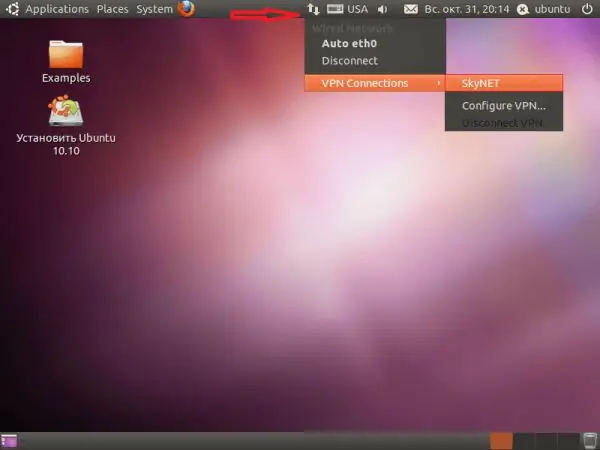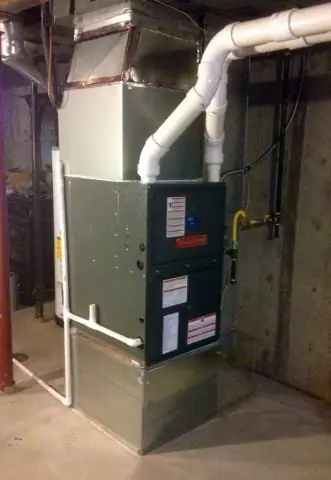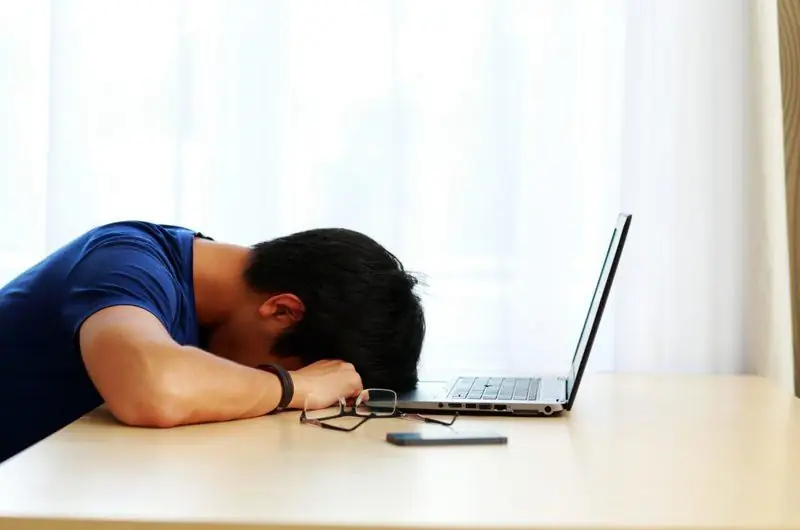
Table of contents:
- Author Bailey Albertson [email protected].
- Public 2023-12-17 12:53.
- Last modified 2025-01-23 12:41.
Methods for setting up an Internet connection on a computer

In most cases, setting up an Internet connection occurs at the time of concluding an agreement with a provider for the provision of services: a representative of a specialized company, as a rule, independently performs all the necessary manipulations that will ensure the correct entry into the World Wide Web. In the future, it may be necessary to re-configure the Internet connection, which the user can easily perform without the help of specialists. Once you've figured out a simple sequence of steps, you can access the network while saving money.
Content
- 1 Settings for Windows XP
- 2 Setting up the Internet on Windows 7
-
3 Internet connection for Windows 10
-
3.1 Ethernet
3.1.1 Video: how to configure network access on Windows 10
-
3.2 PPPoE
3.2.1 Video: access to the network on the top ten through PPPoE
- 3.3 Wi-Fi
- 3.4 3G / 4G modem
-
-
4 Setting up internet connection in Ubuntu
- 4.1 Via terminal
-
4.2 Via Network Manager
- 4.2.1 Wired network setup
- 4.2.2 DNS Configuration
- 4.2.3 PPPoE configuration
-
5 Auto-connect to network when Windows starts
- 5.1 Task Scheduler
- 5.2 Registry Editor
- 5.3 Other methods
Settings for Windows XP
If the PC is running Windows XP, access to the World Wide Web can be configured using the "New Connection Wizard". In this case, you need:
- By clicking on the "Start" button, call the main menu, in which you can find the "Control Panel".
-
Open "Control Panel" and select Classic View.

Windows XP Control Panel In the "Control Panel" select "Switch to Classic View"
-
Go to "Network Connections".

Control Panels Window Next, go to "Network Connections"
-
In the drop-down menu of the "File" item, select "New connection".

Window "Network Connections" In the drop-down menu of the "File" item, select "New connection"
-
Launch the opened "New Connection Wizard" by clicking on the "Next" button.

"New Connection Wizard" "New Connection Wizard" is launched by clicking on the "Next" button
-
If "Connect to the Internet" is checked in the next window, leave everything as it is, otherwise select it and click "Next".

New Connection Wizard window Windows XP Select "Connect to the Internet" as the type of network connection
-
Indicate that manual connection is assumed. In this case, it will be possible to enter the data provided by the provider, that is, the name and password.

Specifying the Internet Connection Method in Windows XP You must select a manual internet connection
-
Select the type of connection that provides a username and password.

Choosing a connection type in Windows XP As the connection type, select the one that asks for a username and password
-
You can create any name for the service provider, or you can specify the name of your provider.

Entering the service provider name The name of the service provider can be any
-
The username and password should be found in the contract or check with the provider.

Entering a username and password when connecting to the Internet in Windows XP The username and password were issued during the first connection, you need to find this data or contact the provider
-
Add a shortcut and complete the wizard by clicking Finish.

Completing the "New Connection Wizard" The work of the new connection wizard is completed by clicking the "Finish" button
If Internet access is performed through the provider's servers (i.e., there is no automatic receipt of IP and DNS addresses), then you need to:
-
Specify the username and password in the window that opens after the completion of the "New Connection Wizard". Here, click the "Properties" button.

Connection window in Windows XP In the "Connection" window, specify the username and password and click the "Properties" button
-
In the "Network" tab, select "TCP / IP Protocol" and click on "Properties".

Connection properties window in Windows XP In the "Network" tab, select "TCP / IP Protocol" and click on "Properties"
-
Specify the IP and DNS obtained from the provider and click OK.

TCP / IP Properties in Windows XP In a new window, specify the IP and DNS received from the provider and click OK
-
Enter the password and go to the connection.

Entering a password when connecting to a VPN Next, enter the password and go to the connection
-
In order not to specify the data each time, you can uncheck the box on the item "Request a name, password, certificate, etc." in the "Parameters" tab. This reduces the security of your computer.

Options tab When unchecked "Prompt for name, password, certificate, etc." Internet access can be obtained by anyone who has approached the computer
If the network is accessed through the provider's servers, you can use a VPN - a private virtual network that transmits information over an encrypted channel. To create a VPN tunnel, you will need:
-
Indicate in the "Wizard" that the connection to the network will take place at the workplace.

Workplace network connection In the "New Connection Wizard" you should specify that the connection to the network will occur at the workplace
-
Choose a VPN connection.

Choosing a VPN connection type In a new window, you need to select a VPN connection
-
Enter a name for the new connection.

Entering a name for a new Windows XP connection In the window that opens, enter the name of the new connection
-
Indicate that you do not need to dial the number for preliminary connection.

New Connection Wizard tool window Windows XP Next, you need to indicate that you do not need to dial the number for preliminary connection
-
Enter the VPN server address you received from the provider.

Provider data entry After that, you need to enter the address of the provider's VPN server
-
Check the box to save username and password.

VPN Connection Window In order not to enter a username and password each time, check the corresponding field
-
Specify the name and password that the provider will provide.

Entering password and username when connecting to VPN In a new window, you need to specify the name and password that the provider will provide
- Go to the item "Properties".
-
Uncheck the box next to "Requires data encryption" in the "Security" tab and click OK.

Security tab At the end, you must uncheck the box next to "Data encryption required" and click OK
Setting up the Internet on Windows 7
The steps you need to take to set up an Internet connection on your Windows 7 PC depend on how you connect to the network. If access to the World Wide Web via Wi-Fi is provided, then quite often problems with access to the network arise due to the mismatch of the driver with the adapter. In this case, it is necessary:
-
Find "Control Panel" in the "Start" menu and click on it.

Windows 7 Start Menu To start setting up the connection, you need to find the "Control Panel" in the "Start" menu and click on it
-
Select "System and Security".

Windows 7 Control Panel Window In the "Control Panel", select "System and Security"
-
In the subsection "System" find the item "Device Manager" and click it.

Windows 7 Device Manager section In the subsection "System" you need to select the item "Device Manager"
-
In the window that opens, click "Network adapters".

Item "Network adapters" Windows 7 In the device manager window, expand the "Network adapters" item
-
The absence of an adapter or an exclamation mark next to it may mean that the driver is not installed or is not installed correctly.

Choosing a network adapter in Windows 7 The absence of an adapter or an exclamation mark next to it may mean that the driver is not installed or is not installed correctly
-
Reinstall the driver by selecting "Update hardware configuration" in the "Action" tab.

Selecting the Action Tab Select the section "Update hardware configuration" in the item "Action" of the main menu of the device manager
If, as a result of the performed manipulations, the Internet does not appear, you will need to install the native drivers, which can be downloaded from the manufacturer's website or from the disk that came with the adapter.
When using the cable Internet, reinstalling the OS may result in a failure of the connection settings set by the provider. To restore access to the network in this case, you must:
-
Click on the shortcut for network connections located at the bottom right of the screen and select "Control Center".

Go to Windows 7 Network and Sharing Center To go to the settings, you need to click on the network connections shortcut located in the tray and select "Control Center"
-
Click on the "Setting up a new connection" link in the "Control Center" window.

Windows 7 Network and Sharing Center window You should select the item "Setting up a new connection" in the window "Control Center"
-
Press "Internet connection" and "Next" one by one.

Choosing an Internet Connection Option in Windows 7 Press "Internet connection" and "Next" one by one
-
Select the type of connection.

Choosing a high-speed connection in Windows 7 Select high-speed connection from the suggested connection types.
-
Fill in the fields with the username and password, as well as the connection name.

Enter the name and password to connect to the Internet Windows 7 Next, you need to fill in the fields with the username and password, as well as the connection name
-
Wait until the Internet connection is established.

Internet connection in Windows 7 After completing all the steps, you need to wait until the Internet connection is established
If these steps do not bring results, you should update the drivers in the same way as with Wi-Fi connection, and also check the network settings. To do this, you need to check with the provider IP and DNS addresses, after which:
-
In the "Control Panel" select "Network and Internet".

Selecting "Network and Internet" in Windows 7 To check the network settings, select the "Network and Internet" item in the "Control Panel"
-
In the window that opens, click "Network and Sharing Center".

Go to the "Network and Sharing Center" In the window that opens, click "Network and Sharing Center"
-
Go to the section "Changing adapter parameters".

Selecting the "Change adapter settings" section Windows 7 After that, you need to go to the section "Changing adapter parameters"
-
Select the required connection and right-click to bring up a menu in which to click "Properties".

Go to Windows 7 Local Area Connection Properties You need to select the required connection and right-click to bring up the menu, in which you click "Properties"
-
Find the item "Internet Protocol (TCP / IP4)" and click "Properties".

Selecting the required version of the Internet protocol Next, you need to find "Internet Protocol (TCP / IP4)" and click "Properties"
-
Fill in the fields of IP and DNS addresses, click OK.

Entering IP and DNS Addresses in Window 7 At the end, you need to fill in the IP and DNS addresses fields, then click OK
These steps are usually sufficient to establish an Internet connection.
Internet connection for Windows 10
Windows 10 PC can access the network using:
- cable (Ethernet connection);
- PPPoE (high speed connection);
- Wi-Fi technologies;
- USB modems 3G / 4G.
Ethernet
The easiest way to connect to the Internet is Ethernet technology, when the connection is made by cable directly or through a router, which is essentially the same, except that the router provides packet data transmission. When using an Ethernet connection, as a rule, it is enough to insert the cable into the connector of the network card, while the settings are performed automatically. If, after connecting the cable, the Internet connection does not appear, you should update the network card drivers, which can be downloaded from the official website of your device.
If the performed manipulations did not give any results, you need to reboot the system, check the reliability of the cable connection, or contact technical support.
Video: how to configure network access on Windows 10
PPPoE
If a high-speed connection is made through a router, you just need to connect the cable to the device and then proceed in the same way as in the case of an Ethernet connection. If the network is accessed directly, the following steps must be taken:
- Open the "Network and Sharing Center".
-
Select "Create or configure a new connection".

Windows 10 Network and Sharing Center window In the "Network and Sharing Center" window, select the creation of a new connection
- In the new window, click "Internet Connection" and "Next".
-
In the next window select "High-speed PPPoE".

Choosing the type of internet connection in Windows 10 Choosing a high-speed internet connection
-
Enter the login and password received from the provider and click "Connect".

Entering credentials for Internet access in Windows 10 Enter the username and password received from the provider and click the "Connect" button
If everything was specified correctly, the connection should appear.
Video: access to the network at the top ten through PPPoE
Wi-Fi
To connect to the Internet via a Wi-Fi router, you just need to install the necessary drivers and know the password for accessing the connection. This connection can be made anywhere there is free access or a password connection.
3G / 4G modem
Internet connection via 3G / 4G modem provides:
- modem and PC switching;
- installation of up-to-date drivers;
- connection regulation (in this case, everything happens similarly to the PPPoE connection, except for the choice of the connection type - instead of the high-speed one, the dial-up is selected).
Setting up internet connection in Ubuntu
Before proceeding with the installation of network access in Ubuntu, you should:
- check with the service provider for the information that will be required when setting up network access;
- make sure the drivers are up to date and the provider's cable is properly connected;
- check the correctness of the network filter parameters;
- disable automatic internet connection utilities;
- find out the name of the network adapter by entering the command $ sudo lshw -C network in the terminal. The adapter name appears next to the "logical name" line.
Via terminal
Any type of Internet connection can be configured using the terminal. The wired network is configured as follows:
- Open the configuration file with the command $ sudo gedit / etc / network / interfaces.
-
Check with technical support for the type of the provider's IP address. If it is dynamic, we enter sequentially:
- iface [interface name] inet dhcp;
- auto [interface name].
-
We save the changes by clicking on the "Save" button.

Saving changes made The changes made are saved by clicking on the "Save" button
-
If the IP address is static, enter the commands:
- iface [interface name] inet static;
- address [address];
- netmask [address];
- gateway [address];
- dns-nameservers [address];
- auto [interface name].
-
You can find out the IP address using the ifconfig command. The port address will be listed after inet addr.

Terminal window in Ubuntu You can find out the IP address using the ifconfig command, it will be indicated after the inet addr line
-
We save the entered parameters.

Saving parameters The results of the performed actions are saved by clicking on the "Save" button
If you need to configure DNS connection, you should:
- Open the interfaces file through the "Terminal" with the command $ sudo gedit / etc / network / interfaces.
-
Enter the line dns-nameservers [address].

Entering DNS address in Ubuntu To enter the DNS address, you must enter the dns-nameservers (address) line
- Save changes.
To set up a PPPoE connection, you will need:
- Enter the command $ sudo pppoeconf in the terminal.
-
Wait for the end of the scan.

Scan device To start configuring the PPPoE connection, you need to enter the command $ sudo pppoeconf in the terminal and wait for the scan to finish
- If there are several network cards, select the one to which the provider's cable is connected.
-
Click the Yes button in the Popular options window.

Ubuntu PPPoE connection settings window Click the Yes button in the Popular options window
-
Enter the login you received from the provider and specify the password.

Provider data entry in Ubuntu settings Enter the login and password received from the provider
-
In the Use peer DNS window, click Yes if the IP address is dynamic, and No if it is static - in this case, DNS is entered manually.

Use peer DNS window With a dynamic IP address, click Yes, with a static IP - No
-
Click Yes in the Limited MSS Problem window.

Limited MSS Problem Window Click Yes in the Limited MSS Problem window
- Allow automatic connection at subsequent power-ups with the Yes button.
-
Confirm the connection request by clicking Yes.

Connection completion window in Ubuntu Click Yes and wait for the connection to be established
Debugging the DIAL-UP connection is performed using the pppconfig utilities (similar to PPPoE connection settings) and wvdial. In the second case, it is necessary:
- Run the command $ sudo apt install wvdial in the terminal.
- Run the wvdialconf utility with the $ sudo wvdialconf command.
-
Open the wvdial.conf file with the command $ sudo gedit /etc/wvdial.conf.

Wvdial.conf file The wvdial.conf file is opened with the command $ sudo gedit /etc/wvdial.conf
-
Add additional parameters to the file:
- Idle Second = 0;
- Dial Attempts = 0;
- [Dialer Pulse];
-
Dial Command = ATDP.

Entering additional parameters into the wvdial.conf file The wvdial.conf file is supplemented with additional parameters
- Run the command $ sudo wvdial in the terminal.
Via Network Manager
Due to the presence of a graphical interface, access to the Internet through the Network Manager is somewhat simplified. The utility icon is located in the upper right.

The Network Manager utility icon is located in the upper right
Setting up a wired network
In this case, the cable network is configured as follows:
- Click on the icon to open the utility and click "Change connections".
-
In the window that opens, click the "Add" button.

Setting up a network connection in Ubuntu In the window that opens, click the "Add" button
-
In the next window, select the Ethernet item from the drop-down list and click on the "Create" button.

Choosing an Ethernet Connection Type in Ubuntu In the next window, select the Ethernet item from the drop-down list and click on the "Create" button
-
In a new window, enter the name of the connection.

Entering the name of the Internet connection in Ubuntu In a new window, enter the name of the connection
-
We select the Ethernet tab and in the Device drop-down list indicate the type of the network card used.

Enter the type and name of the network card We select the Ethernet tab and in the "Device" drop-down list indicate the type of network card used
-
Select the "General" tab and check the boxes opposite the first two items.

General Tab in Ubuntu Window Select the "General" tab and put the checkboxes opposite the first two items
-
In the "IPv4 parameters" tab, select the "Manual" item for the static interface and enter the DNS address obtained from the provider. DHCP is selected for dynamic interface.

IPv4 Settings Tab Select "Manual" for the static interface and enter the data received from the provider or specify the automatic DHCP configuration for a dynamic IP address
- We save the introduced changes.
DNS setup
If you need to manually debug DNS servers, you should:
- From the Network Manager menu, select Change Connections.
-
In a new window, select an existing connection and click on "Modify".

Configuring DNS Servers in Ubuntu In a new window, select the existing connection and click on the "Edit" button
-
Open the "IPv4 settings" tab and select "Automatic (DHCP, address only)" in the "Configuration method" drop-down list. Specify the data in the "DNS Servers" field and click the "Save" button.

Specifying data in the "DNS Servers" field To complete the configuration process, open the "IPv4 Settings" tab and select "Automatic (DHCP, address only)" in the "Configuration method" drop-down list
PPPoE setup
The PPPoE connection is configured as follows:
- Click on the Network Manager icon and select "Change connections".
-
In the new window, select DSL and click "Create".

Setting up a PPPoE connection in Ubuntu In the new window, select DSL and click "Create"
- We specify the name of the connection.
-
Open the DSL tab and enter your username and password.

DSL tab Open the DSL tab and enter your username and password
-
In the "General" tab, check the boxes opposite the first two items.

Go to the "General" tab In the "General" tab, put the checkboxes opposite the first two items
-
In the drop-down list "Device" of the Ethernet tab, select the type of network card.

Go to the Ethernet tab In the drop-down list "Device" of the Ethernet tab, select the type of network card
-
Open the "IPv4 Settings" tab and specify the required configuration method.

Go to the IPv4 Settings Tab in the Settings Panel Open the "IPv4 Settings" tab and specify the required configuration method
You may need to restart your computer for the changes to take effect.
Auto-connect to network when Windows starts
To activate automatic connection to the Internet at Windows startup, there are a number of methods from which you can choose the most appropriate for yourself.
Task Scheduler
Setting up a connection using the Task Scheduler will first require opening and starting this service. To do this, for example, using the Win + R combination, call the Run dialog box and enter the taskschd.msc command. The easiest way is to call the task scheduler with the search bar (the icon is next to the "Start" button). In the window of the service that opens, you must:
-
Create a simple task by clicking on the inscription of the same name.

Create a new task We select the item "Create task" in the menu "Action"
- Come up with any task name.
-
In the "Trigger" section, indicate that you want to start the task when you log into the OS.

Section "Trigger" We indicate that the task should be executed every time you log on to Windows
- In the "Action" section, check the "Run the program" item.
-
Specify rasdial as the script name.

Setting the script name We set rasdial as the name of the script
- Click the "Finish" button.
Registry editor
The Registry Editor can be seen on the screen using the regedit command entered in the Run dialog box. After the editor window is open, you should perform a sequential transition through the following menu items:
- HKEY_LOCAL_MACHINE;
- Software;
- Microsoft;
- Windows;
- CurrentVersion;
- Run.
In the window that opens, you need to specify any name of the parameter, and in the "Value" line write rasdial, and then specify the login and password.
other methods
The above methods of setting up automatic connection to the network are not limited.
If a bat file is selected as a configuration tool, you need to generate it by doing the following:
- In one of the text editors (for example, in Notepad, which is located in the Standard folder of the Start menu), write down two lines, the first of which is cd% systemroot% system32, the second is startrasdial INTERNET login password. The word INTERNET is replaced with the name of the connection, the words login and password - of course, with your username and password (which will be prompted by the provider).
- Save the resulting file, replacing the.txt extension in its name with.bat.
- Move the resulting file with the.bat extension to the StartUp folder by going ProgramData - Microsoft - Windows - Start Menu - Programs - StartUp.
You can verify that the configuration was successful by rebooting the system.
To organize auto access to the network by starting the service, you must:
- Right-click the Start menu, find Command Prompt (or Windows PowerShell) and open it with administrator rights.
- Enter the command sc create startVPN start = auto binPath = "rasdial * connection_name * * user_name * * password *" DisplayName = "StartVPN" depend = lanmanworkstation obj = "NT AUTHORITY / LocalService".
- Press Win + R to open the Run dialog box and enter the service.msc command.
-
In the list of services that opens, find the created process, open its properties and specify the automatic start type.

Properties window of the created process In the "Startup type" field, specify "Automatic (delayed start")"
-
In the "Recovery" tab for all cases, specify "Service restart".

Choosing to restart the service for all cases In the "Recovery" tab, for all cases, specify "Service restart"
Almost any user can master the rules for connecting to the Internet on his computer. To do this, you should strictly adhere to the step-by-step instructions, and also have on hand the data that may be required when performing manipulations related to setting up network access. Such data can be obtained from the service provider.
Recommended:
Installing A Boiler (water Heater) With Your Own Hands: Connection Diagram To The Water Supply System, Rules, Etc

What is a boiler, how does it work. How to independently install and connect an instantaneous and storage water heater. Safety regulations
A Laptop Or Computer Does Not See A WiFi Network: What To Do, How To Solve The Problem With Wi-Fi Connection

Why does the system not display your Wi-Fi access point? What to do if only your network is not visible or if the list of connections is completely empty
Utility "Setup Wizard" For Home Internet Beeline: How To Download The Program And Set Up A Network Connection

What was the purpose of the “Setup Wizard” program from Beeline. Where to download it and how to install it on a PC. How to configure the Internet: automatically and manually
PPPOE Connection Protocol: What Is It, Setting Up A High-speed Connection For Windows 7, 10, Possible Errors

What is PPPoE protocol: pros and cons, principle of operation. How to configure this connection on Windows 7 and 10. What to do if an error appears
How To Fix The Error Your Connection Is Not Secure When Establishing A Connection On Mozila Firefox

Eliminate the error of establishing a secure connection in Mozilla Firefox. Verified instructions
